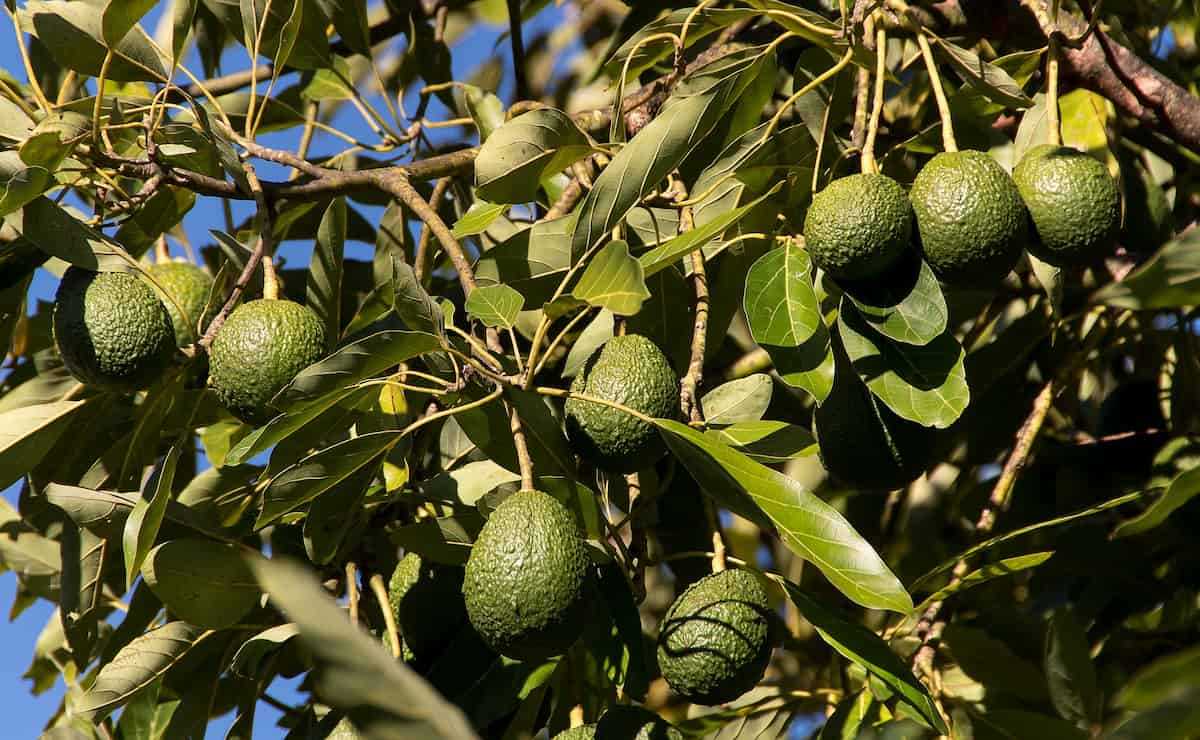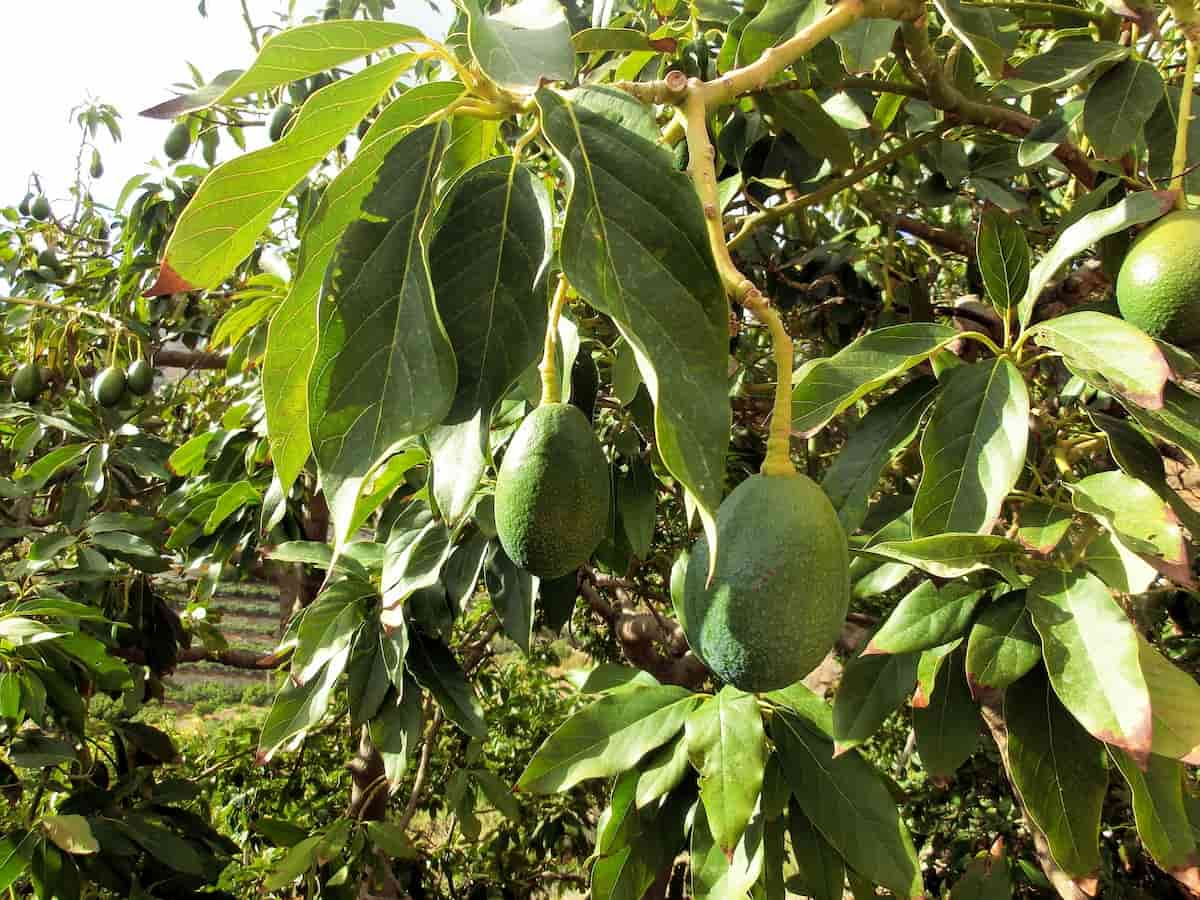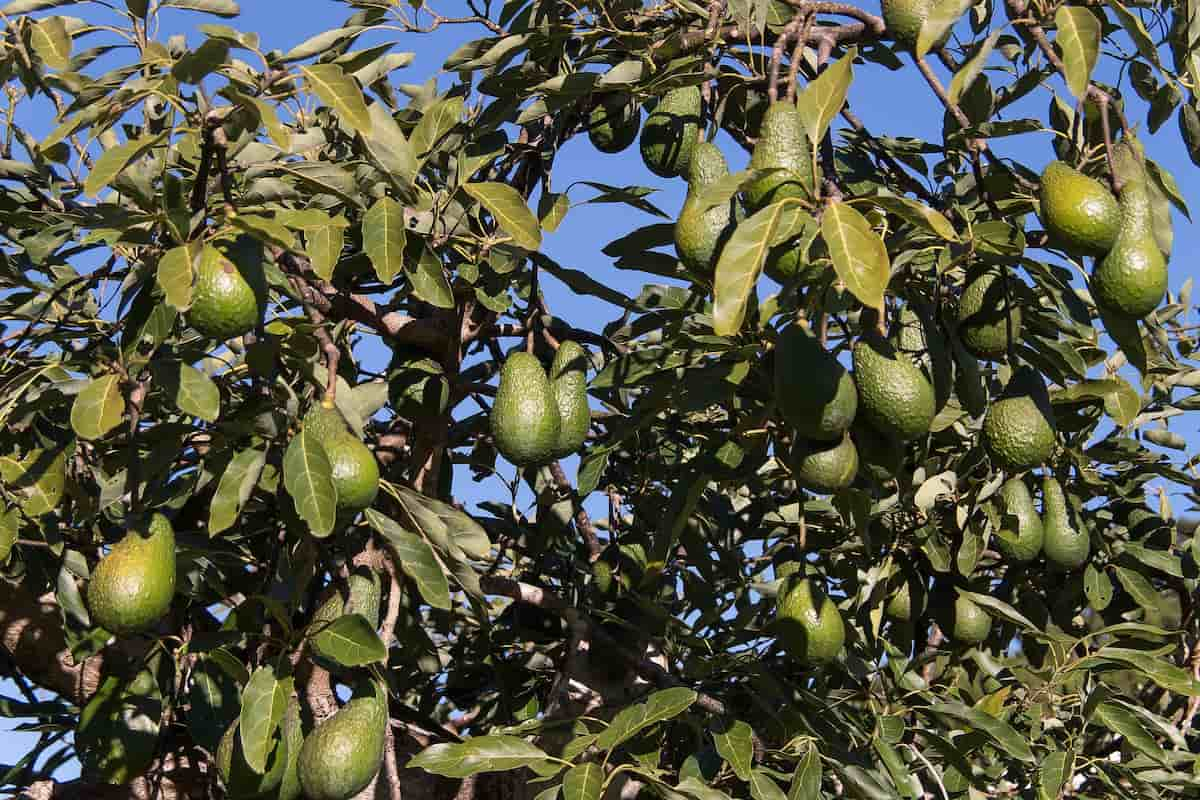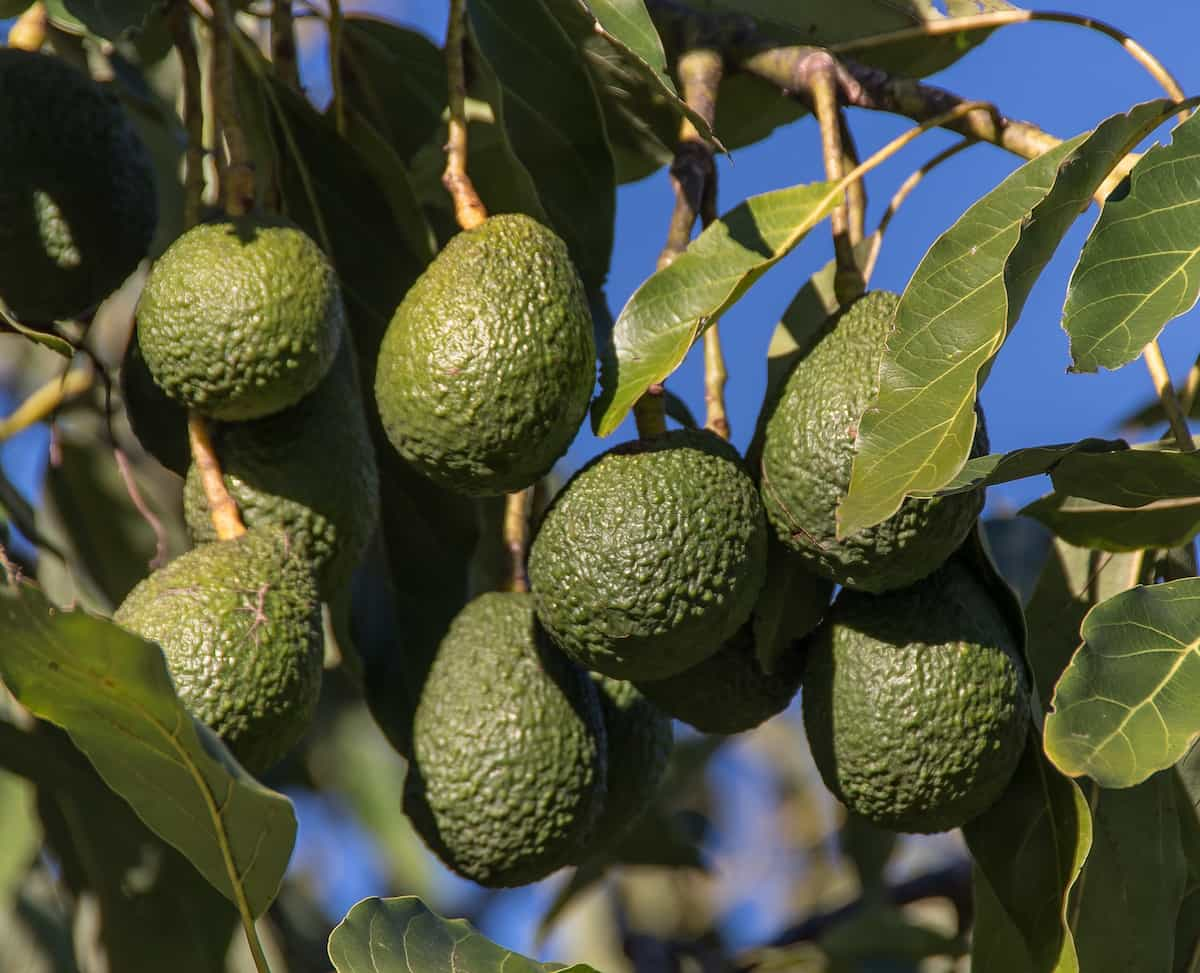With its varied climates, India is ideal for growing almost every kind of fruit imaginable. The ideal climate for avocados is either tropical or subtropical. In India, avocados do best in the middle and the south. Avocados thrive in the warm, moist climate of Tamil Nadu, and it is known that a type of avocados has been successfully grown and tested in the neighboring state of Sikkim. Avocados are now being successfully grown in many additional Indian states, including Kerala, Maharashtra, and Karnataka.

In this article, we will learn about a successful farmer who grew avocadoes and earned huge profits. Below we will see the success story of Mr. Gangadhar, the cultivation details of avocado plants in his words, and the investments and profits involved in avocado cultivation.
How this farmer earned 24 lakhs from his 3 acres avocado farm
Is avocado farming profitable in India?
There is a good probability of making money off of avocado cultivation. In a decade or two, when more farmers have tried their hands at avocado cultivation, the situation may have changed drastically. At this time, it’s reasonable to claim that growing avocados in India pays off well. Fruit imports already exceed domestic fruit production by a significant margin.
The local fruit, unfortunately, isn’t of good enough quality to be exported. The potential for success is considerable if it is possible to get high-quality fruit varieties and if the plan is proven to be workable in parts of India. You may expect to earn a profit even if you just sell the local variety. Considering just locally grown fruits, the profit potential is enormous at 100 Rs per KG.
What are the conditions favorable for avocado farming?
Saline conditions are fatal for avocado trees. They thrive in warmer climates and like a PH of 5-7, making them ideal for tropical regions. They can’t handle high water levels. It is sensitive to dry, cold air and frost. Therefore, the climate in north India is unsuitable. Avocado trees thrive in the warm, humid climate characteristic of the tropics and subtropics.
As a result, the climates of Kerala and Coorg—both of which get some rain in the summer—are ideal for growing avocados. Even if the weather in coastal Kerala is pleasant, you should stay away from there because of the water’s high salt content.
In case you missed it: How this Farmer Earning 8 Lakhs from 3 Acres Sweet Orange Cultivation – A Success Story of a Mosambi/Sweet Lemon Farmer

In which season does avocado grow in India?
Between one hundred and five hundred fruits can be harvested from a single tree. Sikkim’s purple fruits ripen in July, while the green ones ripen in late September or early October. The avocado tree will begin to produce fruit five to six years after planting the seeds.
At maturity, fruits of purple types darken to a rich crimson, while those of green varieties develop a more subtle shade of greenish-yellow. The fruit is ready to be picked when the seed coat within turns from a yellowish white to a deep brown. Mature fruits ripen six to ten days after being picked. Fruits remain firm while still on the trees and only begin to soften after they are picked.
Do avocado trees need much water?
The water needs of avocado trees are high. The water required will vary based on climate, soil composition, and tree age. On average, a mature tree requires between 1,000 and 1,300 millimeters (40 and 50 inches) of rain annually. In the dry and hot summer months, a single tree may need up to 51 mm (2 in) of water every week in Mediterranean regions. Based on the available research, avocado trees in warm areas need around 45 liters of water per day (l/day) in the spring, 136–220 l/day in the summer, and 121 l/day in the fall.
Roots from an avocado tree tend to stay within the top 20–60 centimeters of the soil, making them inefficient in drawing moisture from further down. That’s why it’s so important that rain and irrigation maintain the top 15-20 cm (6-7 in) of soil consistently damp. The plants need to get these amounts more often, although in lesser amounts.
However, the farmer should be aware that too much shallow root system development brought on by frequent light watering might reduce the plant’s resistance to drought and severe winds. Root rot and water and nutrient discharge are two undesirable outcomes of flooding. Therefore, it’s best to prevent them from happening.
In case you missed it: How this Farmer is Earning 24 Lakh from Custard Apple Cultivation: 4 Acres Farming Sucess Story

What fertilizers and pesticides are required for avocado cultivation?
When it comes to climate and soil, avocado is quite selective. Avocados can’t survive in acidic soil. Regular calcium applications have been shown to decrease soil acidity, making it suitable for avocado cultivation. Root rot and other root-area fungal diseases can be avoided using calcium. One of the most common issues with avocado trees is root rot. Root rots can quickly become a serious issue for avocado trees if they are waterlogged. In flood-prone locations, it is standard practice to avoid water logging and construct mounds to prevent it.
Zinc is a specific vitamin that avocados need in addition to Calcium. Zinc is beneficial, but excessive amounts can reduce harvest. Before fertilizer is applied, a leaf analysis must be performed. The soil acidity will be evaluated using a PH test—every once in a while. Nitrogen, alongside calcium and zinc, is the most practical and long-lasting fertilizer for avocado trees. Trees need Nitrogen three times a year, but how often depends on their age.
You should use urea and other water-based nitrogen fertilizers that won’t make your soil more acidic. Avocados in India rarely need pesticides. As the tree grows to 30 feet or more, it becomes almost difficult for small farmers to spray it with pesticide. While big orchards with tens of thousands of trees can benefit from heavy machinery, a small farmer with just a hundred or a thousand trees would not see a return on investment. Additionally, if the spot is chosen carefully, there are few pests.
What are the disadvantages of avocado cultivation?
One of the major limitations is often consumer preferences. It’s possible that the avocado isn’t well-liked in the local market because of its unappealing flavor and the abundance of other tropical fruits that are more widely enjoyed.
Nonetheless, avocado is anticipated to retake their appropriate position in the Indian market due to increased health consciousness among educated people and avocados’ high nutritious value. The fact that the local people of Sikkim’s mountainous state have taken to the avocado so well implies that it can be a useful crop for India’s food security efforts.
In case you missed it: How this Farmer Earning 30 Lakhs from Papaya Cultivation in 6 Acres: An Indian Farmer Success Story

The success story of Mr. Gangadhar
Mr. Gangadhar is from Lambasingi, Andhra Pradesh. He owns 10 acres of land and separately wanted to cultivate long-term crops on 3 acres. But he was very confused about what plants to grow. There were many options for him, but he was unable to choose as he was new to long-term cultivation. He then started investigating different long-term crops. When he consulted the horticultural scientists, they told him that avocado cultivation was best for his land as the climatic conditions were very suitable.
Till then, he hasn’t heard of avocado farming. He learned about the market and was amazed to know it was a commercial crop. He then decided to start avocado cultivation and started learning different avocado cultivation techniques. He learned that the climate where land and the type of soil in his land are very much suitable for avocado cultivation. He started his venture immediately.
Now Mr. Gangadhar is earning huge profits from avocado cultivation and is considering expanding his farm. Below we will learn about the details of Mr. Gangadhar’s Avocado farm and avocadoes cultivation details in Mr. Gangadhar’s words. Also, we will discuss the investments and profits involved in Avocado farming.
Why Mr. Gangadhar chose avocado cultivation?
In India, avocados are not grown for their commercial fruit. However, it is reasonable to say that growing avocados in India is a profitable business, says Mr. Gangadhar. It thrives in the warm, humid conditions of the tropics, subtropics, and equatorial regions and is cultivated there throughout the summer months. Mr. Gangadhar’s land fulfills the above climatic conditions.
Also, as mentioned above, he is looking for long-term crops as they are more manageable, and avocados are long-term and manageable crops. They don’t need as much care as other fruit plants when grown in perfect climatic conditions. These fruits sell for a higher price, which is an additional advantage. Considering all these parameters, Mr. Gangadhar chose to cultivate Avocadoes on his farm.
In case you missed it: How this Farmer Made 42 Lakhs from 5 Acres of Organic Pomegranate Farming: Fruit Cultivation Sucess Story in India

Avocado crop cultivation details, according to Mr. Gangadhar
Avocadoes grow in a cool climate. So, the Lambasingi area of AP is ideal for cultivating these crops, says Mr. Gangadhar. He added that these fruits are in high demand in metropolitan cities such as Hyderabad. Choosing the land is a crucial component in growing avocadoes, says Mr. Gangadhar. Avocadoes grow only in fertilized red soils and sandy red soils. He added tons of chicken manure, animal manure, cow manure, and vermicompost for land preparation. After adding these manures, the land should be thoroughly plowed again.
Mr. Gangadhar bought his plants from Karnataka. He specifically chose specially grafted saplings from a healthy mother plant. He advises people to test the mother plant’s health before buying saplings to ensure the grafted saplings are also healthy. He bought his plants at 180 rupees per plant. One can plant nearly 50 plants per acre, says Mr. Gangadhar. On his whole 3-acre farm, Mr. Gangadhar planted nearly 150 saplings.
The avocado plants can utilize their own dropped leaves as fertilizer and mulch. This self-mulching can prevent moisture from evaporating into the air. This also helps plants in preventing different fungus attacks. When it comes to watering, these plants don’t need much water. Only in the first two years do these plants take up a huge amount of water. Mr. Gangadhar installed a drip irrigation system on his farm. He says drip irrigation is ideal for this type of farm as there is not much water wastage.
He says that it also promotes the effective watering of plants. You should not let water stagnate near your plants. You can also start intercropping between these plants, says Mr. Gangadhar. As avocadoes will yield fruits three years after planting, in the meantime, one can start intercropping between these plants and get back some investment. As intercrops, Mr. Gangadhar planted pineapples, ginger, and turmeric on his farm.
There are no separate fertilizers used in avocado cultivation. Only manures, compost, and vermicompost are enough, he added. Mr. Gangadhar insists that farmers who grow their avocado plants choose a healthy mother plant on their farm and start grafting their saplings. This will cut off your one-time investment cost if you want to expand your farm, says Mr. Gangadhar. Although certain diseases can attack your avocado farm, one can prevent them from taking propping care from the start.
In case you missed it: How this Farmer Making 60 Lakhs from 6 Acres Organic Grape Farm: Organic Grape Cultivation Sucess Story in India

Investment and profit analysis of Mr. Gangadhar’s farm
Mr. Gangadhar says that the running investment will be nearly 3 lakh rupees per acre, including manures cost, labor, and saplings cost. That means for his whole 3-acre farm; it took him nearly 9 lakh rupees as an investment. Talking about income, Mr. Gangadhar says that he harvests nearly 200 kgs per tree on average, and he sells his harvest at 110 rupees per kg to various supermarkets. He made deals with various supermarkets even before starting his farm.
When calculating income for his whole 3-acre farm with 50 trees per acre, he gets nearly 33 lakh rupees. If we calculate net profit for his whole farm, Mr. Gangadhar gets nearly 24 lakhs as net profit each year. This is huge for a long-term crop with less maintenance. In this way, Mr. Gangadhar earned huge profits from his avocado farm, and he advises farmers looking for a long-term crop to choose this crop as it has less risk and many advantages.
- Types of Pesticides Used in Agriculture: A Beginner’s Guide
- Economical Aquaculture: A Guide to Low-Budget Fish Farming
- 15 Common Planting Errors That Can Doom Your Fruit Trees
- How to Make Houseplants Bushy: Effective Tips and Ideas
- Innovative Strategies for Boosting Coconut Pollination and Yield
- Pollination Strategies for Maximum Pumpkin Yield
- The Complete Guide to Chicken Fattening: Strategies for Maximum Growth
- Natural Solutions for Tulip Problems: 100% Effective Remedies for Leaf and Bulb-Related Issues
- Revolutionizing Citrus Preservation: Towards a Healthier, Greener Future
- Natural Solutions for Peony Leaf and Flower Problems: 100% Effective Remedies
- Maximizing Profits with Avocado Contract Farming in India: A Comprehensive Guide
- Natural Solutions for Hydrangea Problems: 100% Effective Remedies for Leaf and Flowers
- The Ultimate Guide to Choosing the Perfect Foliage Friend: Bringing Life Indoors
- From Sunlight to Sustainability: 15 Ways to Use Solar Technology in Agriculture
- The Ultimate Guide to Dong Tao Chicken: Exploring from History to Raising
- The Eco-Friendly Makeover: How to Convert Your Unused Swimming Pool into a Fish Pond
- Mastering the Art of Delaware Chicken Farming: Essentials for Healthy Backyard Flocks
- 20 Best Homemade Fertilizers for Money Plant: DIY Recipes and Application Methods
- How to Craft a Comprehensive Free-Range Chicken Farming Business Plan
- Brighten Your Flock: Raising Easter Egger Chickens for Beauty and Bounty
- How to Optimize Your Poultry Egg Farm Business Plan with These Strategies
- Subsidy for Spirulina Cultivation: How Indian Government Schemes Encouraging Spirulina Farmers
- Ultimate Guide to Raising Dominique Chickens: Breeding, Feeding, Egg-Production, and Care
- Mastering the Art of Raising Jersey Giant Chickens: Care, Feeding, and More
- Ultimate Guide to Raising Legbar Chickens: Breeding, Farming Practices, Diet, Egg-Production
- How to Raise Welsummer Chickens: A Comprehensive Guide for Beginners
- How to Protect Indoor Plants in Winter: A Comprehensive Guide
- Ultimate Guide to Grow Bag Gardening: Tips, Tricks, and Planting Ideas for Urban Gardeners
- Guide to Lotus Cultivation: How to Propagate, Plant, Grow, Care, Cost, and Profit
- Agriculture Drone Subsidy Scheme: Government Kisan Subsidy, License, and How to Apply Online
- Ultimate Guide to Raising Araucana Chickens: Breed Profile, Farming Economics, Diet, and Care
- Bringing Hydroponics to Classroom: Importance, Benefits of Learning for School Students
- Ultimate Guide to Raising Polish Chickens: Breed Profile, Farming Economics, Diet, and Care
- Ultimate Guide to Raising Australorp Chickens: Profile, Farming Economics, Egg Production, Diet, and Care
- Silkie Chicken Farming: Raising Practices, Varieties, Egg Production, Diet, and Care
- Sussex Chicken Farming: Raising Practices, Varieties, Egg Production, Diet and Care
Want to know if avacados can be grown in manho areas of south Punjab in Pakistan.
I am planning avocado farming at Maharashtra Sangli, plesa help me on this project, requesting you to please share your contact details for help.
I’m planning do some trees in my land what is the process. Please tell.me
I am thinking of doing it in Mahabaleshwar Maharashtra, Is it suitable there considering heavy rainfall ?